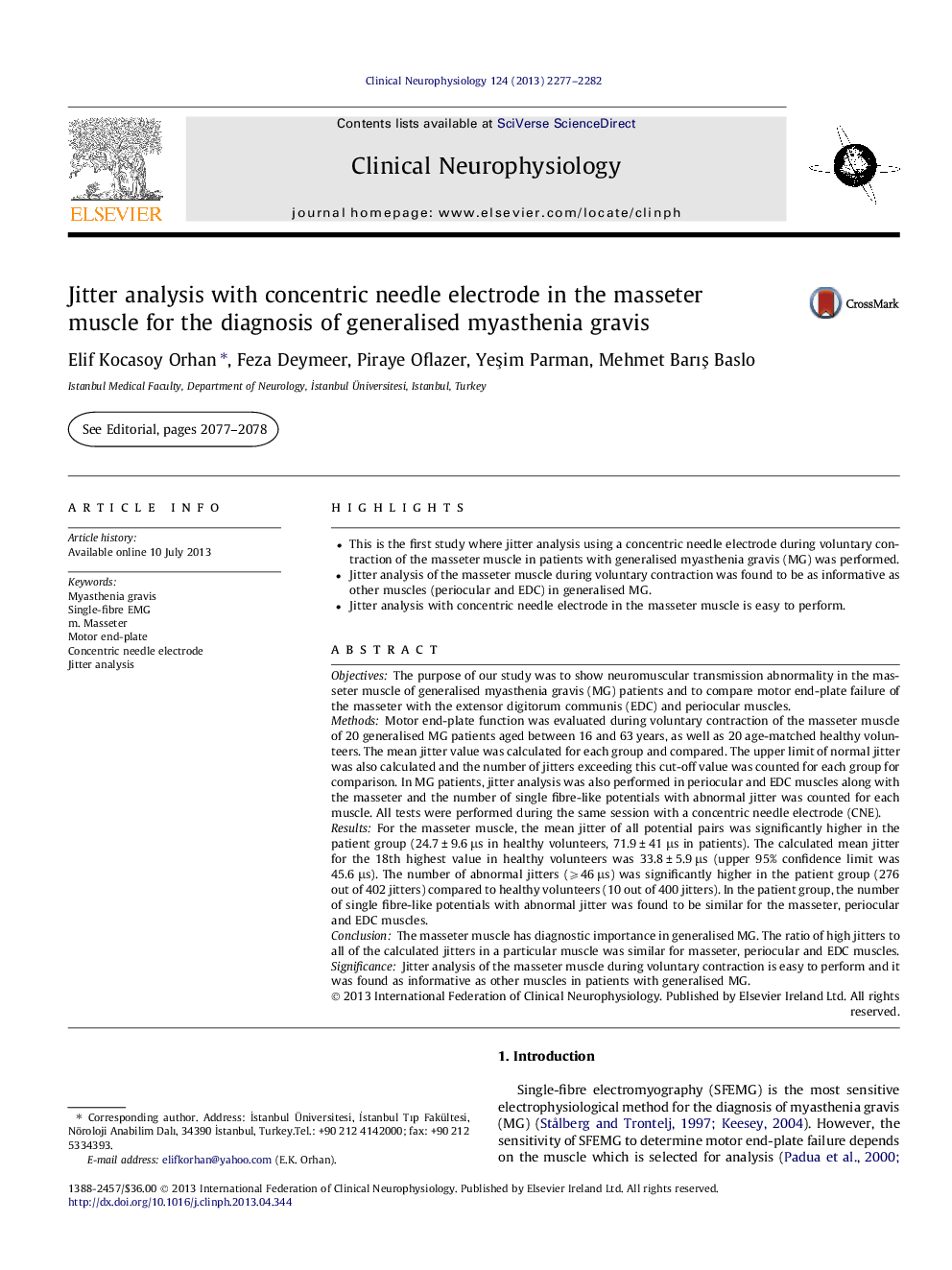| Article ID | Journal | Published Year | Pages | File Type |
|---|---|---|---|---|
| 3043331 | Clinical Neurophysiology | 2013 | 6 Pages |
•This is the first study where jitter analysis using a concentric needle electrode during voluntary contraction of the masseter muscle in patients with generalised myasthenia gravis (MG) was performed.•Jitter analysis of the masseter muscle during voluntary contraction was found to be as informative as other muscles (periocular and EDC) in generalised MG.•Jitter analysis with concentric needle electrode in the masseter muscle is easy to perform.
ObjectivesThe purpose of our study was to show neuromuscular transmission abnormality in the masseter muscle of generalised myasthenia gravis (MG) patients and to compare motor end-plate failure of the masseter with the extensor digitorum communis (EDC) and periocular muscles.MethodsMotor end-plate function was evaluated during voluntary contraction of the masseter muscle of 20 generalised MG patients aged between 16 and 63 years, as well as 20 age-matched healthy volunteers. The mean jitter value was calculated for each group and compared. The upper limit of normal jitter was also calculated and the number of jitters exceeding this cut-off value was counted for each group for comparison. In MG patients, jitter analysis was also performed in periocular and EDC muscles along with the masseter and the number of single fibre-like potentials with abnormal jitter was counted for each muscle. All tests were performed during the same session with a concentric needle electrode (CNE).ResultsFor the masseter muscle, the mean jitter of all potential pairs was significantly higher in the patient group (24.7 ± 9.6 μs in healthy volunteers, 71.9 ± 41 μs in patients). The calculated mean jitter for the 18th highest value in healthy volunteers was 33.8 ± 5.9 μs (upper 95% confidence limit was 45.6 μs). The number of abnormal jitters (⩾46 μs) was significantly higher in the patient group (276 out of 402 jitters) compared to healthy volunteers (10 out of 400 jitters). In the patient group, the number of single fibre-like potentials with abnormal jitter was found to be similar for the masseter, periocular and EDC muscles.ConclusionThe masseter muscle has diagnostic importance in generalised MG. The ratio of high jitters to all of the calculated jitters in a particular muscle was similar for masseter, periocular and EDC muscles.SignificanceJitter analysis of the masseter muscle during voluntary contraction is easy to perform and it was found as informative as other muscles in patients with generalised MG.
